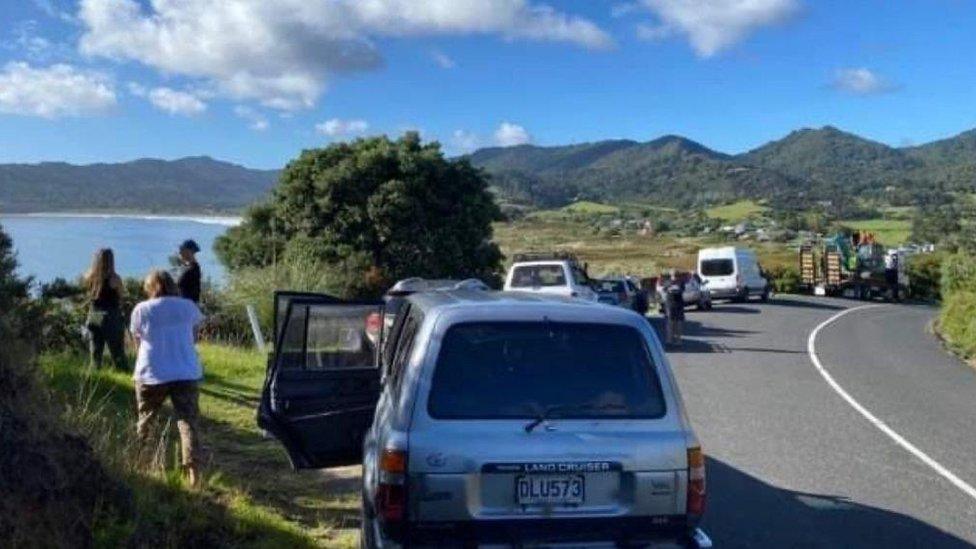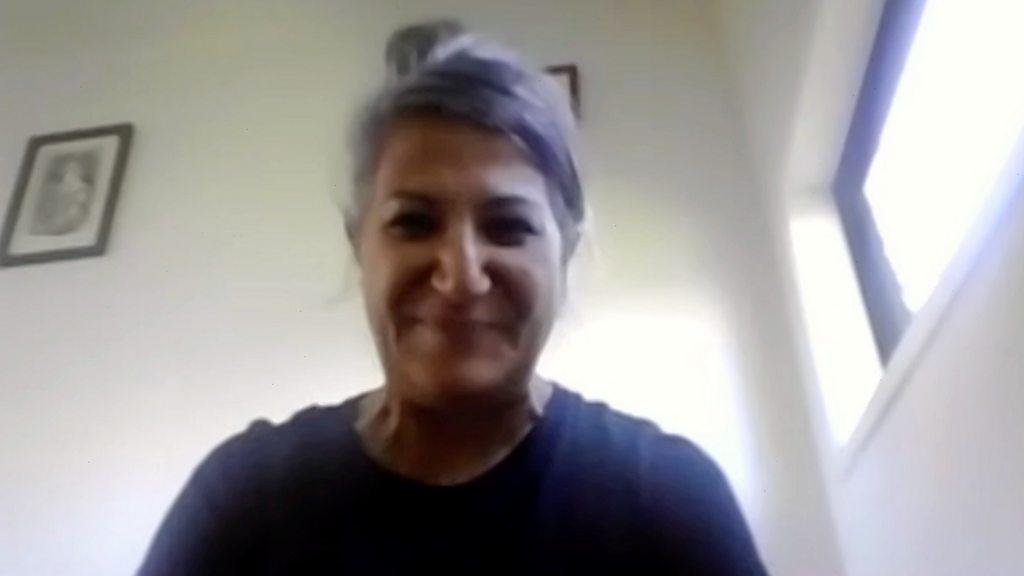New Zealand earthquakes: Tsunami warnings lifted after evacuations
- Published

People wait on higher ground on Great Barrier Island amid the tsunami alert
Three earthquakes, including one of the strongest ever to hit the region, struck off the coast of New Zealand on Friday, triggering tsunami warnings that have now been stood down.
Thousands were evacuated from some coastal areas of the North Island after the third, 8.1-magnitude quake struck.
There were reports of traffic gridlock as people tried to reach higher ground.
The national tsunami warning was lifted at 15:43 (02:43 GMT), some 13 hours after the first quake.
Some wave surges hit parts of the coast but, by Friday afternoon, authorities said the largest waves had passed. Residents were told they could return home but were warned to stay off beaches.
New Zealand: "What happens if there is another earthquake?"
The South Pacific archipelagos of New Caledonia and Vanuatu have been warned to prepare for dangerous waves.
Their coasts could see wave surges as high as 3m (10ft), while parts of South America - including Peru, Ecuador and Chile - were warned they could see 1m waves reaching their coasts.
The Hawaii-based Pacific Tsunami Warning Center said "tsunami waves have been observed", external, but as yet no damage had been reported.
'Bumper to bumper' traffic
New Zealand Prime Minister Jacinda Ardern posted on Instagram: "Hope everyone is ok out there."
The three earthquakes, all above 7.0 magnitude, came during the early hours of Friday.
The last, at 8.1, struck at around 08:30 near the uninhabited Kermadec Islands, 1,000 km (621 miles) north-east of New Zealand.
While earlier tsunami warnings had been called off, the third quake prompted the National Emergency Management Agency to send out a new alert and tsunami sirens sounded in some areas.
Allow X content?
This article contains content provided by X. We ask for your permission before anything is loaded, as they may be using cookies and other technologies. You may want to read X’s cookie policy, external and privacy policy, external before accepting. To view this content choose ‘accept and continue’.

The agency told people near the coast in several areas to move immediately to high ground or get inland as far as possible.
It said "strong and unusual currents and unpredictable surges" with tsunami activity continuing for several hours.
Local media reported gridlock in towns such as Whangarei and Whakatane as people tried to flee their homes, schools and workplaces.


In nearby Ohope town, resident Leslie Peake was quoted by the New Zealand Herald as saying the traffic was "bumper to bumper" with "huge queues of people evacuating".
New Zealand's civil defence department advised people to walk or cycle to avoid getting caught in traffic
Meanwhile local media posted footage of waves rolling into Tokomaru Bay.
Allow X content?
This article contains content provided by X. We ask for your permission before anything is loaded, as they may be using cookies and other technologies. You may want to read X’s cookie policy, external and privacy policy, external before accepting. To view this content choose ‘accept and continue’.

Just last week, New Zealand marked the 10th anniversary of the 6.3 magnitude earthquake that destroyed parts of Christchurch in the south Island, killing 185 people.

Tsunami warnings were also issued for Hawaii and American Samoa, but later stood down.
Patrick Ti'a Reid, 37, was among those in American Samoa, situated some 3,300 km (2,000 miles) north-east of New Zealand, who had been told to evacuate to higher ground in an emergency bulletin.
"Alarms went off in our executive office building and we immediately took for higher ground," Mr Ti'a Reid, who works for the government in the US territory, told the BBC.
He said the tsunami of 2009, external, which was triggered by an 8.1-magnitude earthquake, was "very much vivid in many Samoans' minds".

Are you in the region? Share your experiences by emailing haveyoursay@bbc.co.uk, external.
Please include a contact number if you are willing to speak to a BBC journalist. You can also get in touch in the following ways:
WhatsApp: +44 7756 165803
Tweet: @BBC_HaveYourSay, external
Please read our terms & conditions and privacy policy
If you are reading this page and can't see the form you will need to visit the mobile version of the BBC website to submit your question or comment or you can email us at HaveYourSay@bbc.co.uk, external. Please include your name, age and location with any submission.
Related topics
- Published5 March 2021

- Published22 February 2021

- Published25 May 2020
